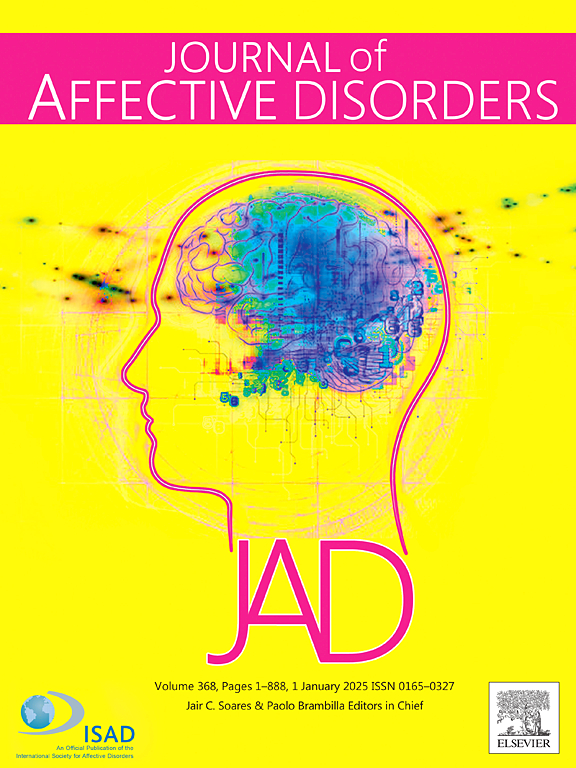Gene expression profiles associated with gray matter and dynamic connectivity disruptions in major depressive disorder
IF 4.9
2区 医学
Q1 CLINICAL NEUROLOGY
引用次数: 0
Abstract
Purpose
To identify biomarkers linking molecular mechanisms to macroscale brain changes in major depressive disorder (MDD) by integrating multimodal neuroimaging, transcriptomics, and machine learning.
Methods
First, T1-weighted and resting-state functional magnetic resonance imaging (rs-fMRI) data from 160 first-episode, drug-naïve MDD patients and 119 age-/sex-matched healthy controls (HCs) were analyzed. Voxel-based morphometry (VBM) and dynamic functional connectivity (dFC) analyses were conducted to generate case-control t-maps. Next, minimum Redundancy Maximum Relevance (mRMR) was applied for feature selection, followed by support vector machine (SVM) modeling for diagnostic classification and symptom prediction. Subsequently, partial least squares (PLS) regression was employed to examine the link between case-control t-maps and gene expression. Finally, the findings were validated using two independent cohorts and alternative brain atlases.
Results
Patients with MDD exhibited gray matter reductions in bilateral inferior frontal gyri and dFC disruptions between default mode and sensorimotor networks (all PFDR < 0.05). The models classifier built on multimodal imaging features achieved high diagnostic performance (AUC = 0.92 [0.80–0.97], sensitivity = 0.84, specificity = 0.87, accuracy = 0.83) and accurately predicted symptom severity (HAMD: r = 0.614, NGASR: r = 0.581, MoCA: r = 0.707; all PFDR < 0.05). Neuroimaging-transcriptome integration identified 884 genes associated with structural-functional alterations (|Z| > 3, PFDR < 0.05), enriched in protein localization/trafficking, RNA metabolism, and chromatin organization. Replication analyses confirmed the model's robust generalizability.
Conclusion
Multimodal imaging and transcriptomic integration revealed reliable biomarkers and underlying molecular pathways, supporting personalized diagnosis and intervention in MDD.
重度抑郁症中与灰质和动态连接中断相关的基因表达谱
目的通过整合多模态神经影像学、转录组学和机器学习,确定与重度抑郁症(MDD)大尺度脑变化分子机制相关的生物标志物。方法首先,对160例首发drug-naïve MDD患者和119例年龄/性别匹配的健康对照(hc)的t1加权和静息状态功能磁共振成像(rs-fMRI)数据进行分析。采用基于体素的形态测量(VBM)和动态功能连接(dFC)分析生成病例对照t图。其次,采用最小冗余最大相关性(mRMR)进行特征选择,然后采用支持向量机(SVM)建模进行诊断分类和症状预测。随后,偏最小二乘(PLS)回归被用来检验病例对照t图和基因表达之间的联系。最后,使用两个独立的队列和不同的脑图谱验证了研究结果。结果MDD患者表现为双侧额下回灰质减少,默认模式和感觉运动网络之间的dFC中断(所有PFDR <;0.05)。基于多模态影像特征构建的模型分类器具有较高的诊断性能(AUC = 0.92[0.80-0.97],灵敏度= 0.84,特异性= 0.87,准确率= 0.83),能够准确预测症状严重程度(HAMD: r = 0.614, NGASR: r = 0.581, MoCA: r = 0.707;所有PFDR <;0.05)。神经成像-转录组整合鉴定出884个与结构-功能改变相关的基因(|Z| >;3、PFDR <;0.05),富含蛋白质定位/运输、RNA代谢和染色质组织。复制分析证实了该模型的鲁棒泛化性。结论多模式成像和转录组整合揭示了可靠的生物标志物和潜在的分子通路,为MDD的个性化诊断和干预提供了支持。
本文章由计算机程序翻译,如有差异,请以英文原文为准。
求助全文
约1分钟内获得全文
求助全文
来源期刊

Journal of affective disorders
医学-精神病学
CiteScore
10.90
自引率
6.10%
发文量
1319
审稿时长
9.3 weeks
期刊介绍:
The Journal of Affective Disorders publishes papers concerned with affective disorders in the widest sense: depression, mania, mood spectrum, emotions and personality, anxiety and stress. It is interdisciplinary and aims to bring together different approaches for a diverse readership. Top quality papers will be accepted dealing with any aspect of affective disorders, including neuroimaging, cognitive neurosciences, genetics, molecular biology, experimental and clinical neurosciences, pharmacology, neuroimmunoendocrinology, intervention and treatment trials.
 求助内容:
求助内容: 应助结果提醒方式:
应助结果提醒方式:


